How to manage your capacity with Synergist
| In: Resource management | Product

Peaks and troughs are a standard part of agency life. But they can be a real headache. Rising to the challenge of how to manage the super-busy times and the all-too-quite lulls can be a constant battle for many agencies. And establishing whether to recruit, restructure or take on freelancers can be tricky.
But while peaks and troughs are somewhat inevitable, Synergist can help you manage these fluctuations in utilisation. So you can proactively plan your resources to create a calmer, less-chaotic workplace.
Here’s how you can plan your resources smartly and capably, with just a few calculations and your Synergist tools.
Adding capacity targets in Synergist
Time is the beating heart of your agency, your all-important asset. So the first thing to do is understand how much time you actually have available to sell.
This means working out how much each team member has available to do chargeable work: their ‘utilisation’ rate.
Clearly, not every minute of every working day will be chargeable. Think about tea breaks, toilet breaks, meetings/briefings, lunch. Not to mention things like pitches, internal jobs and new business.
There’s no one-size-fits-all approach to this, as it’s a case of utilisation per person. It varies by role and responsibilities, so you’ll need to look at each person within your agency on an individual basis. A small investment of time upfront really will reap the rewards further on.
To work out a utilisation rate for each person, you need to do some calculations. Agency experts Agency Works, recommend the following process:
- Interview each team member. Ask them how much time they spend on non-billable work. This will vary from person to person and it’s not set in stone. But you might find some team members are more frequently put on internal jobs, for example, than others.
- Take a look back at their timesheets over the past year. This will give you an accurate picture of time spent (if timesheets have been logged correctly). If you just do a month or two you could catch someone in holiday season, or when they’ve been temporarily working on an internal project. The broader the timeframe, the better.
- Consider your plans for the year. Have you got any major internal projects coming up or new business initiatives which will divert certain people’s time? This goes back to the ‘individual’ aspect. Which of your team are you likely to use most for non-client work?
- Calculate their target chargeable hours (aka target utilisation). Deduct their non-billable hours from their total hours, to give you your number of chargeable hours (you can turn this into a percentage).
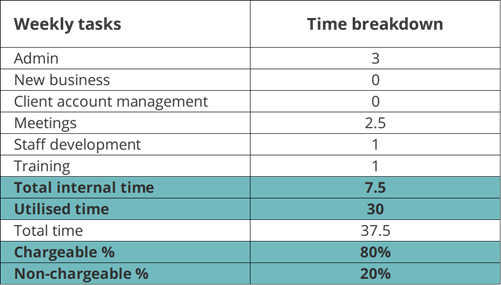
Once you have a realistic idea of each team member’s target chargeable hours, you can add their total hours required (this is essentially their contracted hours) and target chargeable hours to their staff record in Synergist.
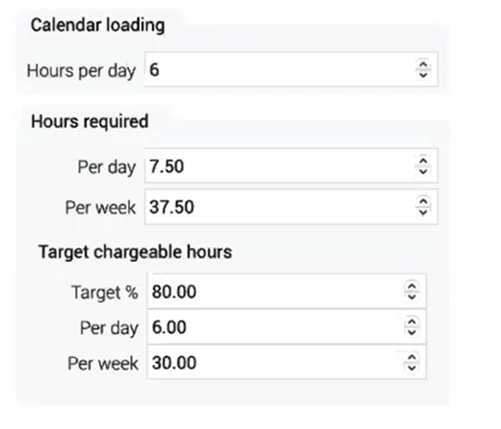
As the example above shows, a designer working 37.5 hours per week with an 80% target of chargeable hours will have 30 hours a week of capacity.
Top tip: Remember, not everyone and everything is chargeable. For those who aren’t, leave the fields blank so they don’t show in your capacity calculations.
See your capacity forecast: using the scheduling dashboard to drive decision making
Using Synergist’s scheduling dashboard, you can see how much time has been estimated on live jobs, booked on chargeable and non-chargeable work or holidays, and how much is still available.
It does this by comparing the estimated time remaining on a job against each charge code (aka role) and spreading this time between the start and due dates. For example, if you’ve estimated 30 hours across three months and spent 20 hours in month one, it will divide the remaining 10 hours across the next two months.
You can instantly see how you’re performing against your chargeable hours’ target, to make sure what you’ve sold is in line with your agency’s capacity.
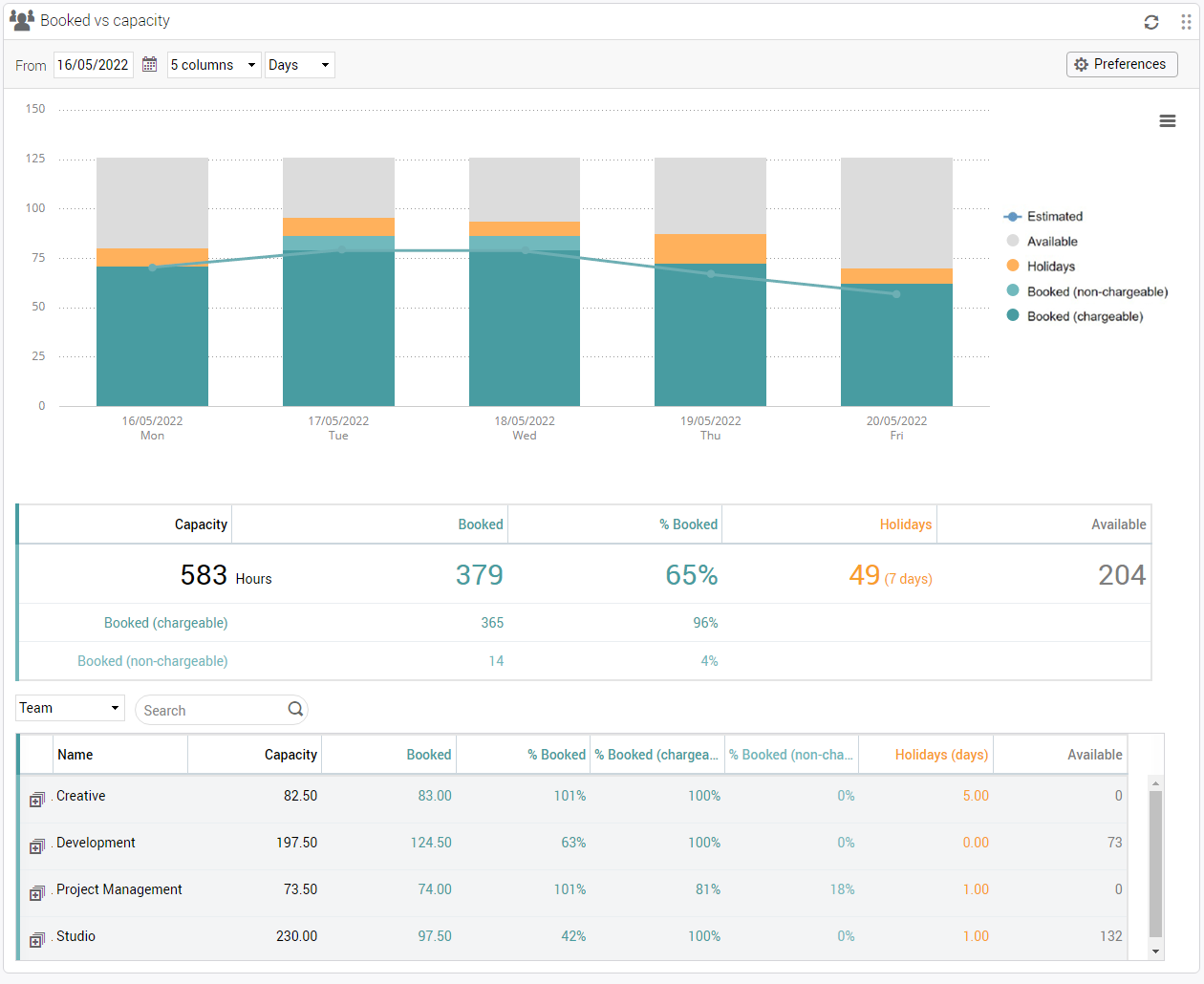
View this data by department, team or individual to quickly see where you have hours to sell and where you might have resourcing issues. You can also spot increased demand for specific skills. This is valuable information as it can help you to tailor your longer-term training, recruitment, and freelancer-hiring decisions.
Crucially, you can instantly see any peaks and troughs and work with your clients to move start and due dates for a calmer, less chaotic schedule. Clients don’t want shoe-horning into a crammed timetable. They want their work done carefully and diligently, so managing their expectations about deadlines upfront is key.
Understand the impact of winning new work
If work lands, what will this mean for your capacity? A clear idea of what’s coming in can help you plan better.
Again, this is where the scheduling dashboard is on your side. Under preferences, tick ‘Include opportunities in estimated’ to see how winning opportunities would affect your resources. Or you can just look at the impact of the most probable opportunities by opting for ‘Weighted’.

Top tip: Make sure your estimates, start and due dates and job status are always up to date for accurate capacity forecasting.
Take control of your capacity to move from chaos to calm
Effective capacity forecasting helps you move away from the chaotic feast-or-famine way of working that seems to beleaguer so many agencies. Instead, it can shift you into a more peaceful mode, with teams operating at as near to full capacity as possible.
While the day-to-day work of an agency is in creative thinking, the ultimate profitability and sustainability are in the planning and preparation.

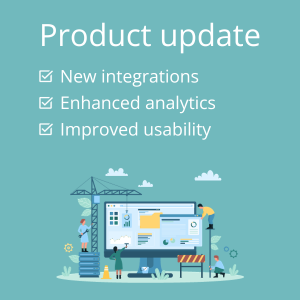 Product update: new integrations, enhanced analytics and improved usability
Product update: new integrations, enhanced analytics and improved usability 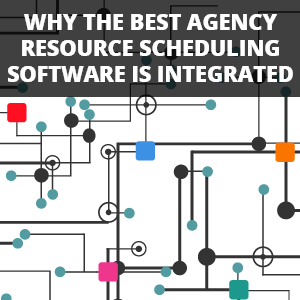 Why the best agency resource scheduling software is integrated
Why the best agency resource scheduling software is integrated  What is Project Management
What is Project Management